This is a very simple but very mild and effective soap. A soap made of two of the nature's most precious plant oils: Avocado oil and olive oil.
Both oils are extremely rich in useful unsaponifiables (of course only the unrefined, virgin oils): antioxidants, fat soluble vitamins and other useful ingredients. The unsaponifiables of Avocado oil are often extracted and offered as an stand alone skin care ingredient for creams and lotions.
With slightly different fatty acid compositions, combining the two oils has a synergistic effect on the lipid membrane. Olive oil contains little to no palmitic acid, whereas avocado oil has about 20%. It is the same with alpha-linolenic acid: avocado oil contains about 5% whereas olive oil contains less than 1 % of alpha-linolenic acid.
Both avocado and olive oil are excellent emollients being applied since thousands of years both as a culinary and as a cosmetic oil. So why not combine them in a mild soap with a beautiful green color?
Avocado and olive oil are, depending on the nature, slightly different in color. Avocado has a dark green color whereas olive oil has a golden-green color. In trace they are very similar and hardly distinguishable. After the soap is hard and out of mold however, the color difference appears once more. The olive oil soap has a very light and the avocado has a more intense green color. This is why I prefer to mix them as two different soaps to have a beautiful marbled optic, as you can observe in the photo.
It is a perfect soap for those who want to try a luxurious but easy Palm-free recipe. The whole preparation takes a short time and you probably need longer to read the tutorial and to gather all the supplies than to make the soap itself.
Despite lacking palm oil, castor oil, coconut or babassu oil, the soap has an acceptable hardness and a luxurious foam.
I applied the skin friendly Patchouli essential oil both for its excellent effect on skin and for the green and fresh scent. If Patchouli is not your scent, you can apply Rosemary or Eucalyptus essential oils. Citrus oils such as Lemon or Bergamot are not stable in lye soap. Make sure, before you prepare the first 5 kg batch that your essential oil does not accelerate the trace by trying a 500 gr or smaller batch.
Before we start I want to recommend you to read our older posts about general information regarding hygienic manufacturing practice in cosmetic lab, introduction to Basic equipment and utensil for a cosmetic lab and the safe handling of Sodium hydroxide.
I recommend to weight and heat the oils separately for a marbled effect. If you want to combine two oils but have an still easier and faster procedure, you can combine the two oils from the very beginning. In that case, you'll have a uniform color which is lighter than avacado oil soap but darker than olive oil soap. For the superfat, I decided to apply 5% Avocado oil. You can apply olive oil or a mixture of the two if you prefer.
I've applied a silicone loaf mold for the soap. The soap should be isolated however for at least 4-5 days. You may apply your wooden loaf as usual if you prefer (don't forget to line up your mold).
Here we go
for this project (500 gr oil) you'll need:
2,5% Patchouli essential oil (12,5 gr)
For the lye:
180,0 gr distilled water
63,67 gr NaOH
a silicone or a wooden loaf mold (you can try two of our mini silicone molds)
a water bath
A Thermometer
Two stainless steel pot or Pyrex jar (to heat the oils in the water bath)
A stick blender (try to find some with plastic stab)
Glass beaker for fragrance oil and superfat oil
A plastic beaker or bowl for NaOH
A plastic jar for lye
A plastic or silicone spatula or spoon
Safety goggles, gloves and mask
patience and high spirits
Instruction:
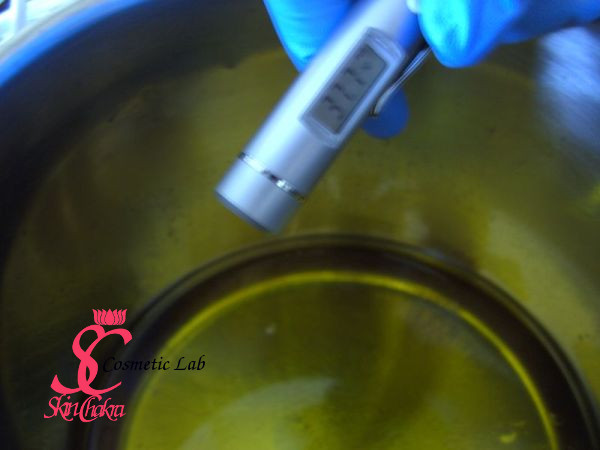
One: In two suitable pots weigh avocado (only 225 gr of 250 gr) and olive oil separately. Put the pots or jars in a water bath @ 40-45 degrees Celsius. The oils are liquid at room temperature and shouldn't be melted, however they should be warm as the lye is added to the oil. There are other soap makers who make this kind of soap @ room temperature and don't heat the oils at all. I prefer to mix lye and oils @ around 40 degrees.
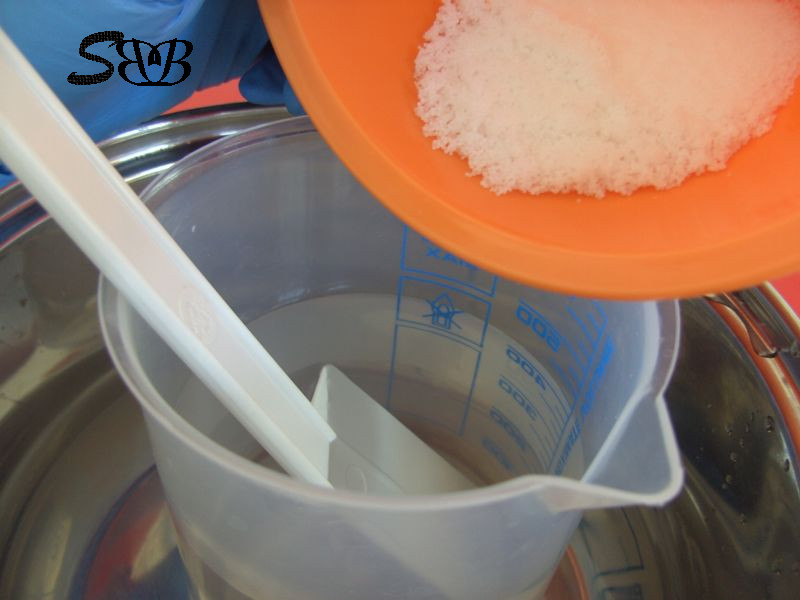
Two: Weigh Sodium Hydroxide in a plastic beaker or bowl (Do not forget safety goggles, mask and gloves). Slooooowly and under stirring, add Sodium hydroxide to water. NEVER POUR WATER OVER NaOH. Adding NaOH to water is an exothermic reaction, producing heat. To control the temperature and avoid coming water to boiling, you may put the water jar in a pot with cold or ice water.
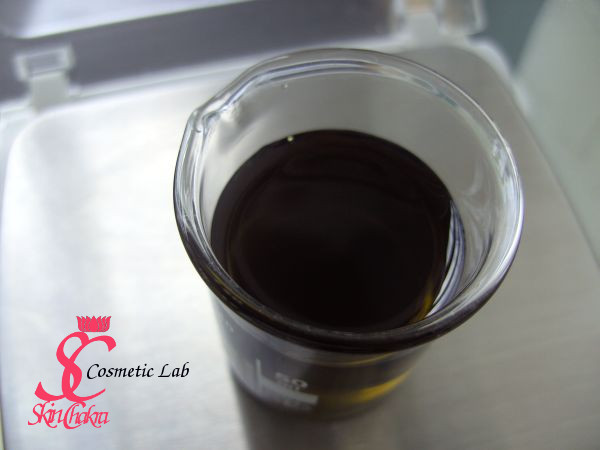
Three: Meanwhile and as you're waiting for the temperature to adjust, weigh the essential oil and the remaining 25 gr of avocado oil in a small glass beaker.
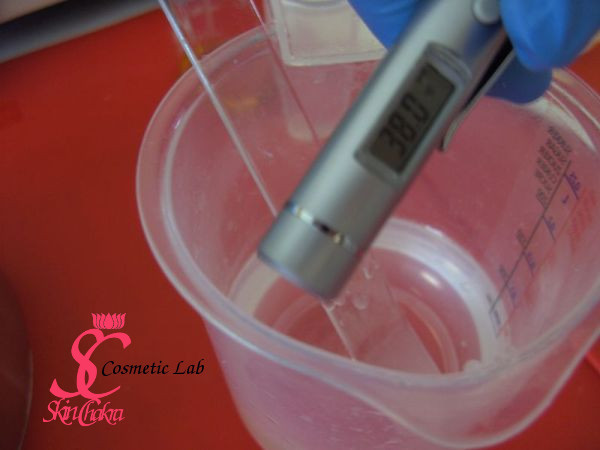
Four: Control the temperature of the lye and the oil phases. They should be between 38-45 with a max. difference of 10 degrees between oil and lye. If any phase has a higher temperature, cool it down in a water bath to the desired temperature while keeping the other phase in a constant temperature. We have cooled both phases to 38 degrees in this project.
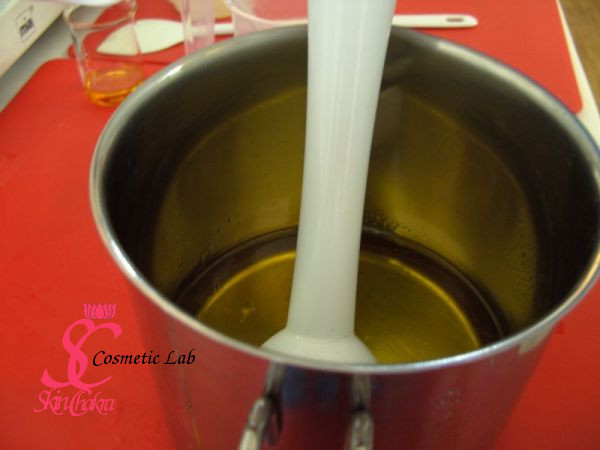
Start first with one of the oils (no matter which one) and then proceed with the other one exactly in the same way. Eyeballing the lye, add one half to the olive oil and the other to the avocado oil. Both oils have a very similar saponification number and since the quantity is similar as well, eyeballing is quite sufficient.
The oils come to a very light trace so try to avoid over blending. You need only 5-7 bursts each for a few seconds.
Five: Before adding lye to oils immerse the blender slowly in the oil phase. Tap it gently a few times at the bottom to get rid of big air bobbles. (it is not on yet)

Six:Keep the blender in an angled position in the oil (it's still off) and add sloooooowly the lye over the stab (about half of it), try to avoid air bubbles.
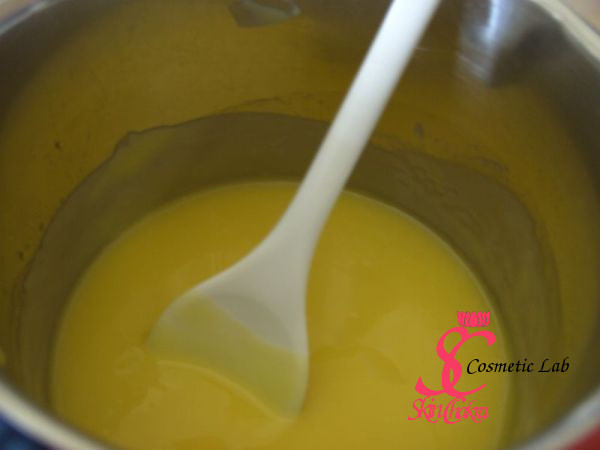
Seven: After the lye is added, turn the blender on. Blend in short intervals and then turn off and repeat this step for a few bursts. Immediately after turning the blender on, the mixture turns opaque and the viscosity increases. The soap does not reach a trace. Avoid over stirring.
Follow the same procedure with the rest of the lye and the other oil.
Eight: From now on, stir with a silicone spatula or spoon. After the two pots come to a light trace, add the superfat (25 gr avocado oil) and the essential oil to the pots. Eyeballing is quite sufficient. Stir for a short time with the spatula or spoon.
At this stage, the soaps have a very similar color. Don't worry it changes as the soap dries.
Nine: Add the two soaps alternatively and as you like. In this specific case, we've added the soap in the middle of the mold near to one wall. The soap spreads in a circle over the mold and you have alternative rings. The higher you keep your hand during pouring, the more the colors blend. (at this stage you can hardly distinguish the color difference)
Ten: After adding the whole soap, spray the surface with alcohol to avoid the white ash over the surface (sodium carbonate).

Eleven: Cover the soap with a foil and then wrap it into towels or blankets. The soap needs at least 4-5 days before you press it out of the mold.
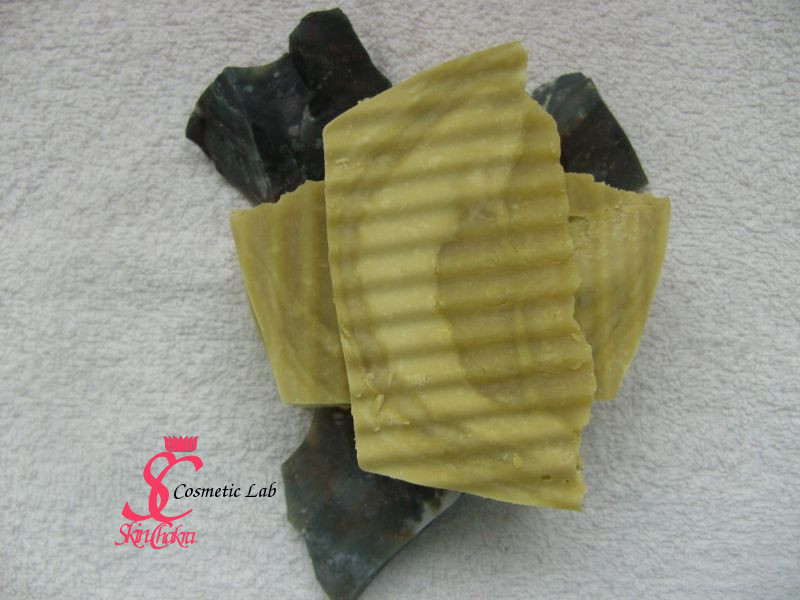
Twelve: Cut the soap and let the soap pieces rest on wracks for at least 8 weeks. At this stage the color difference between two oils is quite obvious.
You can buy all the ingredients for this project in SkinChakra® Online Shop.
BeHappy and have fun.
Swettis Beauty Blog am : Avocado shower butter-on-the-rope tutorial